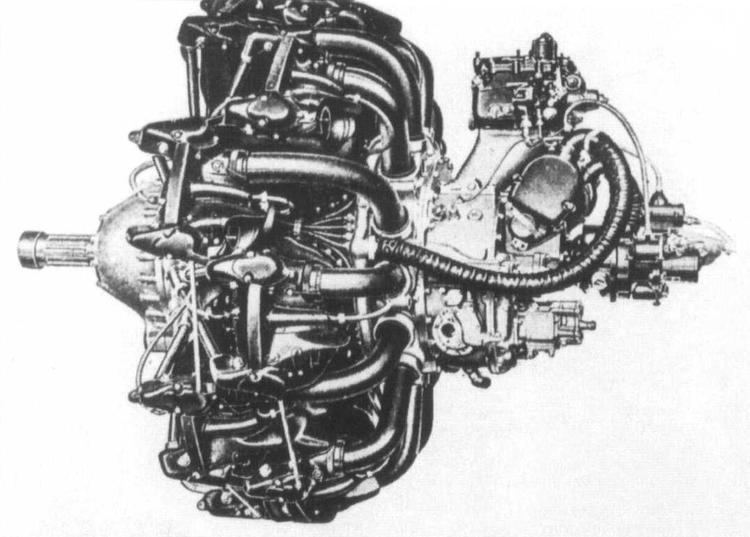 | ||
The Mitsubishi Kasei (火星, Mars) was a two-row, 14-cylinder air-cooled radial engine built by Mitsubishi Heavy Industries and used in a variety of World War II Japanese aircraft, such as Mitsubishi J2M and Mitsubishi G4M. The Mitsubishi model designation for this engine was A10 while it was an experimental project, in service it was known as the MK4, and known as the Ha101 & Ha111 by the Army and Kasei by the Navy. According to unified designation code it was Ha-32 of the variants from 11 to 27.
Contents
Design and development
Although originally ordered by the Imperial Japanese Navy, the Kasei was based on the earlier Mitsubishi Shinten engine, itself based originally on the Mitsubishi Kinsei. Produced in a wide variety of models, the Kasei began with a rated power of 1,530 horsepower (1,140 kW), with a gradual evolution to 1,850 horsepower (1,380 kW) in later wartime versions. Three variants were developed for the Japanese Navy starting in 1939. It was also later adopted by the Imperial Japanese Army as the Ha-101 engine. Unified code was Ha-32.
Physically, the engine had a rather large 1,322 millimetres (52.0 in) diameter compared to the 1,180 millimetres (46.5 in) of the Nakajima Homare engine. Its size and weight meant it was a challenging engine to use on single engine fighters.
Variants
1,410 horsepower (1,050 kW), 2350 rpm at 1,000 metres (3,300 ft)
1,380 horsepower (1,030 kW), 2350 rpm at 4,000 metres (13,000 ft)
1,420 horsepower (1,060 kW), 2350 rpm at 2,600 metres (8,500 ft)
1,300 horsepower (970 kW), 2350 rpm at 6,000 metres (20,000 ft)
1,680 horsepower (1,250 kW), 2500 rpm at 2,600 metres (8,500 ft)
1,540 horsepower (1,150 kW), 2500 rpm at 6,000 metres (20,000 ft)
1,600 horsepower (1,200 kW), 2500 rpm at 1,300 metres (4,300 ft)
1,520 horsepower (1,130 kW), 2500 rpm at 4,100 metres (13,500 ft)
1,510 horsepower (1,130 kW), 2500 rpm at 2,800 metres (9,200 ft)
1,810 horsepower (1,350 kW), 2500 rpm at 7,200 metres (23,600 ft)
Applications
Specifications (MK4V 27)
Data from
